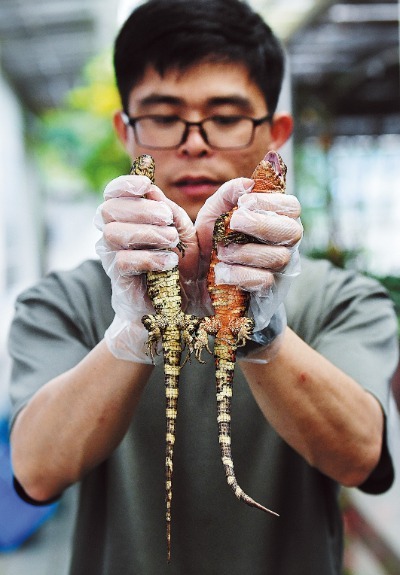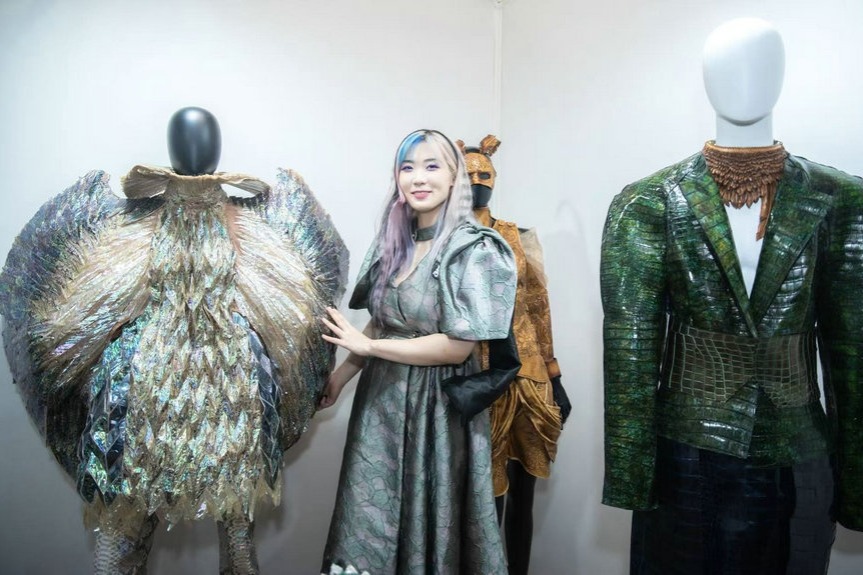Crocodile lizards, as old as the dinosaur, see numbers grow


GUANGZHOU-Summer has returned to southern China, bringing with it abundant sunshine and rich rainfall, waking up the spirit of Chinese crocodile lizards in the Luokeng nature reserve in Shaoguan, Guangdong province.
"After more than four months of hibernation, it is time for the rare reptile to mate and breed," says Liu Haiyang, a researcher who has been studying Chinese crocodile lizards for more than six years.
Endemic to southern China and Vietnam, the ancient reptile, as old as the dinosaur, mainly lives in subtropical forests near freshwater ponds and slow-moving streams. The lizard gets its name from its muscular body and tail that resemble that of a crocodile.
The semiaquatic creature spends most of its time in humid and cool places, says Liu, adding that the lizard prefers lush vegetation, especially trees with branches overhanging streams, which can provide shelter and protection.
The colorful species was listed as endangered on the International Union for Conservation of Nature Red List of Threatened Species and is under first-class national protection.
"The lizards are the last surviving species of their genus and family, which date back more than 100 million years, so they merit further protection to maintain biodiversity," says He Nan, a senior researcher in the nature reserve.
Luokeng nature reserve has established three stations with more than 60 personnel responsible for protecting the lizards' habitat.
Special zones have also been set up in the reserve to study its breeding and chip implant technology to raise its survival rate and success rate of reintroduction.
Scientists conducted a field survey last year and found 121 Chinese crocodile lizards, and estimated that their total population in the area is around 770 to 887, an increase of more than 30 percent from 2012, according to Liu.
After decades of effort put into the protection of the rare species since it was first found in this area by scientists in 2001, its wild population in China has risen to 1,200 from about 700, notes Liu, adding that the reserve has released 150 artificially bred Chinese crocodile lizards into the wild since 2009.
"The first batch of released reptiles are in good condition and have grown into adults. We've even found that they've reproduced, which is a good indication of the success of reintroduction," says He.
"We've shifted our focus from genetic rescue to maintaining its population as the number of Chinese crocodile lizards has been on an upward trend," says He. "The main purpose of artificial breeding has also changed from reintroduction to scientific research."




































